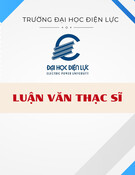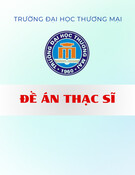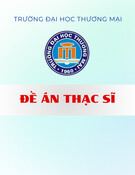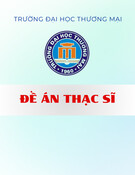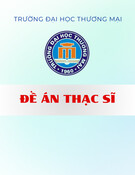
Impact Resistance of Composite Scarf
Joints under Load
A thesis submitted in fulfilment of the requirements for the
degree of Master of Engineering
by
Min Ki Kim
B.Eng. (Aero) (Hons.) (RMIT)
School of Aerospace, Mechanical & Manufacturing Engineering
Science, Engineering and Technology Portfolio
RMIT University
August 2010
The work described in this thesis was conducted as part of a research program of the
Cooperative Research Centre for Advanced Composite Structures (CRC-ACS) Ltd

II
“This page is left blank intentionally for double-sided printing.”

III
Declaration
I certify that except where due acknowledge has been made, the work is that of the author
alone; the work has not been submitted previously, in whole or in part, to qualify for any
other academic award; the content of the thesis is the results of work which has been
carried out since the official commencement date of the approved research program; any
editorial work, paid or unpaid, carried out by a third party is acknowledged; and, ethics
procedures and guidelines have been followed.
Min Ki Kim

IV
“This page is left blank intentionally for double-sided printing.”

V
Acknowledgements
Many people have helped and supported me throughout my masters. I sincerely thank,
Dr. Stefanie Feih who gave me a wonderful level of guidance and provided tireless
advice across all aspects of my research. She was always supportive and encouraging,
and an invaluable source of knowledge (and with a big smile).
Prof. Chun Wang who was always willing to share his broad knowledge and expertise
on my study, as well as precious advice and support.
Mr. David Elder who provided unmeasurable advice and support throughout the
project, especially through the organisation of C-scanning and testing.
Prof. Israel Herszberg who supported me with his expertise and guidance.
A/Prof. Javid Bayandor who was my original supervisor. His initial support in early
stages of the project was most appreciated.
Dr. Caleb White who gave a thorough demonstration of manufacturing composite
laminates with clever techniques to help me accelerate my composite manufacturing.
Narendra Babu who supported me so many times when using the test rig at Monash
University. Without your help, I would still be doing dynamic testing at Clayton.
Peter Tkatchyk who was always ready to lend assistance and expertise in testing at
RMIT.
Robert (Bob) Ryan who helped me many times to have the specimens cured in the
autoclave. Without your help, I might’ve still been trying to cook the specimens using
a microwave.
Dr. Tom Mitrevski who provided me with valuable command files for VeeOne Lab.
Mr. Howard Morton who tirelessly helped me to have the coupons c-scanned at
DSTO. With the quality and high resolution of these images, it was so much easier to
identify the damage.
Mrs Lina Bubic who supported the administration of my program so well and was
ready to help anytime I brought her an issue or problem throughout my study at
RMIT.
The team of the RMIT composite meeting who gave me the opportunity to share my
work and provided valuable advice. Through our fortnightly meetings, I was able to
build up knowledge on composites not only from my own study but also from these

